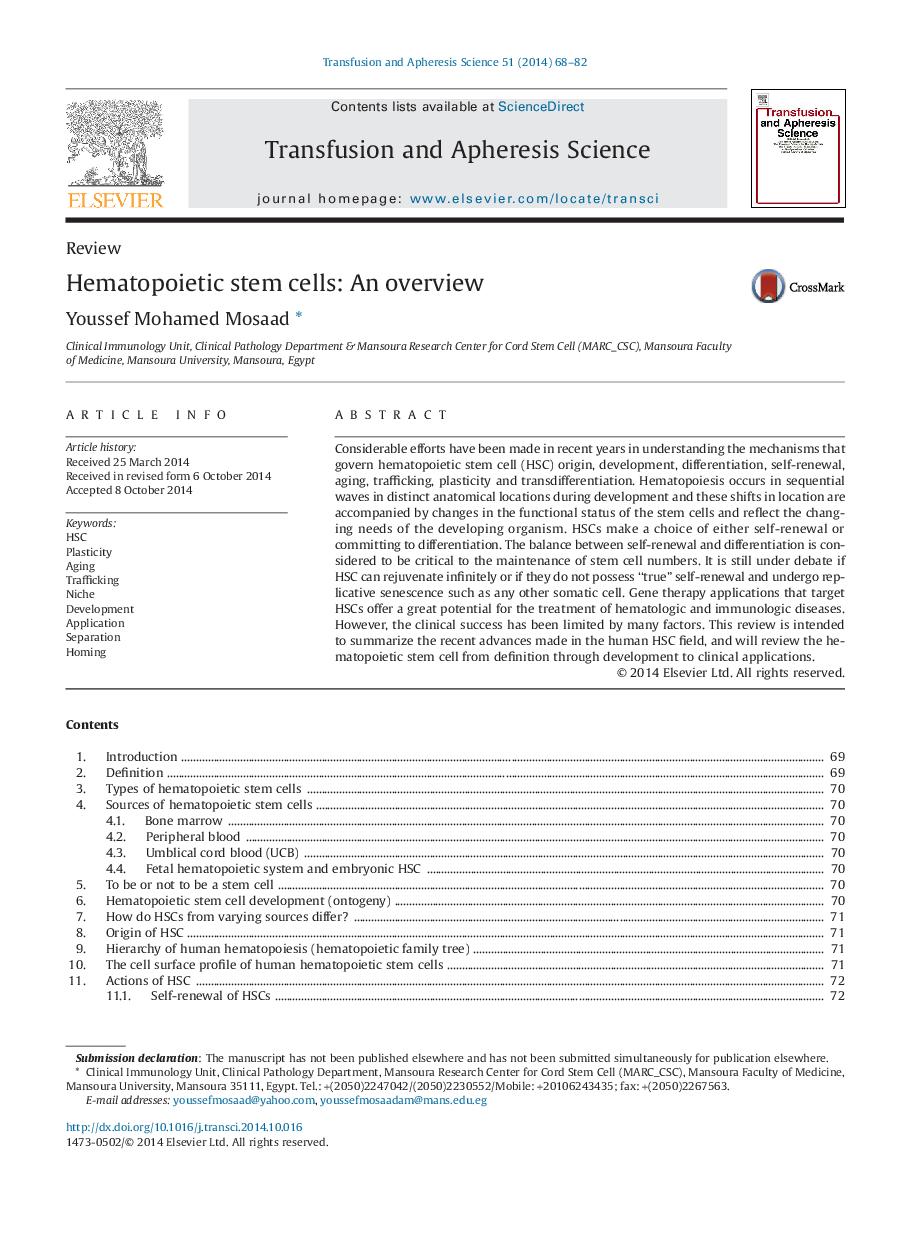| Article ID | Journal | Published Year | Pages | File Type |
|---|---|---|---|---|
| 3334979 | Transfusion and Apheresis Science | 2014 | 15 Pages |
Considerable efforts have been made in recent years in understanding the mechanisms that govern hematopoietic stem cell (HSC) origin, development, differentiation, self-renewal, aging, trafficking, plasticity and transdifferentiation. Hematopoiesis occurs in sequential waves in distinct anatomical locations during development and these shifts in location are accompanied by changes in the functional status of the stem cells and reflect the changing needs of the developing organism. HSCs make a choice of either self-renewal or committing to differentiation. The balance between self-renewal and differentiation is considered to be critical to the maintenance of stem cell numbers. It is still under debate if HSC can rejuvenate infinitely or if they do not possess ‘‘true” self-renewal and undergo replicative senescence such as any other somatic cell. Gene therapy applications that target HSCs offer a great potential for the treatment of hematologic and immunologic diseases. However, the clinical success has been limited by many factors. This review is intended to summarize the recent advances made in the human HSC field, and will review the hematopoietic stem cell from definition through development to clinical applications.
